Articles and Games for Home School
Welcome, home-schooling moms, dads and kids! This site is all about creative and interesting ways to help kids with their math - and who wants that more than you? On this page, I've collected together a few articles on home-schooling that I think are particularly useful.
Also, just to help you out, I've gone through all the games on this site, and evaluated them with you, the home-schooler, in mind.
It's my sincere hope that these resources will make your home-schooling a little more joyful - or a little less burdensome - wherever you may now be in your home-schooling journey.
First, the articles
There's so much information on the net about homeschooling. I've picked out some articles I particulary like, and with the author's permission, I've reproduced them here.
- Pamela Connolly has written an excellent three-part series on "Learning Styles". Each child is unique, and each learns in a different way. That's one of the main points about homeschooling, of course - you can tailor your teaching to each tyke's temperament. The big question is how? Pamela answers by showing you how to understand your child better, and giving tips on what kind of activities will really gel the most well. Start at Part 1, or skip forward to Part 2 or Part 3.
That's all for the articles (so far!). Now for the games!
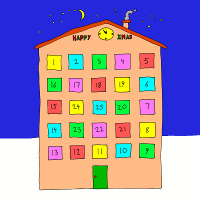 An Advent Calendar, besides being a great Christmas tradition, helps teach younger kids counting and calendars in a fun, exciting way. Download and print this free advent calendar, make up up with a trimmer and glue, and enjoy the Christmas countdown with your child.
An Advent Calendar, besides being a great Christmas tradition, helps teach younger kids counting and calendars in a fun, exciting way. Download and print this free advent calendar, make up up with a trimmer and glue, and enjoy the Christmas countdown with your child.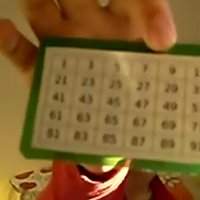 Print these Magic Number Cards, learn how to use them, and with a bit of practice you'll be able to amaze your friends with your number guessing skills! This page provides the traditional version of this trick, as well as a few variations of my own invention. Full instructions and a video example are available at the web page.
Print these Magic Number Cards, learn how to use them, and with a bit of practice you'll be able to amaze your friends with your number guessing skills! This page provides the traditional version of this trick, as well as a few variations of my own invention. Full instructions and a video example are available at the web page.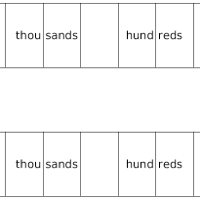 Print out as many foldable number sheets as you want, and use them to explain our "number system" - why the 8's in eight thousand, eight hundred and eighty-eight all mean different things, even though they look exactly the same! There are three sizes of printable sheets, and also a movie showing one time I used them with my son to explain a point that was troubling him.
Print out as many foldable number sheets as you want, and use them to explain our "number system" - why the 8's in eight thousand, eight hundred and eighty-eight all mean different things, even though they look exactly the same! There are three sizes of printable sheets, and also a movie showing one time I used them with my son to explain a point that was troubling him.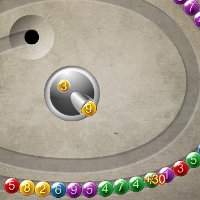 Math Lines is like 'Zuma' with a math twist. A twisty row of colorful numbered marbles winds its way across the screen. If they get too far, that's the end of the game. Blast away with marbles of your own, and if you join two marbles that add to 10, they'll explode and give you more time to win. Can you make it to the next level?
Math Lines is like 'Zuma' with a math twist. A twisty row of colorful numbered marbles winds its way across the screen. If they get too far, that's the end of the game. Blast away with marbles of your own, and if you join two marbles that add to 10, they'll explode and give you more time to win. Can you make it to the next level?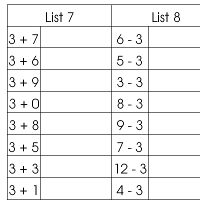 These Sight Number exercises, inspired by "Salisbury Sight Words", are designed to help your kids memorise their addition, subtraction and multiplication tables in the optimal way.
These Sight Number exercises, inspired by "Salisbury Sight Words", are designed to help your kids memorise their addition, subtraction and multiplication tables in the optimal way. Does someone need Practice Multiplying Or Dividing By Ten, Hundred or a Thousand? This worksheet generator lets you create as many practice questions as you like for manipulating powers of 10. Create easy or difficult worksheets, long or short ones, or even create individual worksheets for each member of your classroom to prevent copying...
Does someone need Practice Multiplying Or Dividing By Ten, Hundred or a Thousand? This worksheet generator lets you create as many practice questions as you like for manipulating powers of 10. Create easy or difficult worksheets, long or short ones, or even create individual worksheets for each member of your classroom to prevent copying... These Math Mazes are good for puzzle-loving kids as they learn their 7 and 8 times tables. They may look like ordinary mazes, but knowing your times table will help you reach your goal!
These Math Mazes are good for puzzle-loving kids as they learn their 7 and 8 times tables. They may look like ordinary mazes, but knowing your times table will help you reach your goal!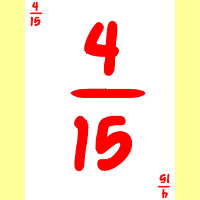 Try the Fractions Card Game if you have children who need to practice adding and subtracting fractions. There's a set of playing cards to print and cut out, and suggestions for at least three games you can play with them. In one, the aim is to find groups of cards that add up to one, so kids will pick up skills in addition and subtraction of fractions, as well as reducing fractions, as they pit their wits against one another.
Try the Fractions Card Game if you have children who need to practice adding and subtracting fractions. There's a set of playing cards to print and cut out, and suggestions for at least three games you can play with them. In one, the aim is to find groups of cards that add up to one, so kids will pick up skills in addition and subtraction of fractions, as well as reducing fractions, as they pit their wits against one another.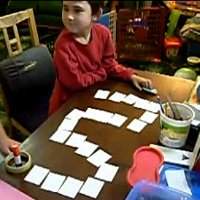 Flashcard Stepping Stones is a simple game, quick to set up, and helps make flashcards more enjoyable. Be as theatrical as possible, and create an imaginary playful world for your child, as he or she recalls the math facts they need to rescue the princess, or destroy the evil robot, or arrive at adventureland!
Flashcard Stepping Stones is a simple game, quick to set up, and helps make flashcards more enjoyable. Be as theatrical as possible, and create an imaginary playful world for your child, as he or she recalls the math facts they need to rescue the princess, or destroy the evil robot, or arrive at adventureland!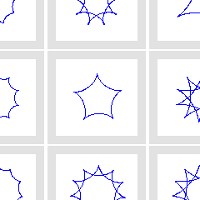 Get your kids using this Spirograph Applet, and watch them make beautiful patterns. While they are enjoying the artwork, you can read here about the math they are learning!
Get your kids using this Spirograph Applet, and watch them make beautiful patterns. While they are enjoying the artwork, you can read here about the math they are learning! These timetable worksheets will give your child practice reading timetables, schedules, itineraries and the like.
These timetable worksheets will give your child practice reading timetables, schedules, itineraries and the like.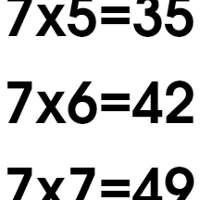 This website has a host of times table charts and grids that you can download and print - even up to the 20 times tables!
This website has a host of times table charts and grids that you can download and print - even up to the 20 times tables!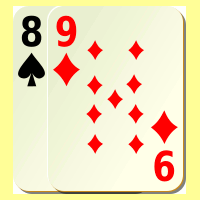 Try Fish Plus One for kids who need to practice their basic addition skills. This game can be played with a normal pack of cards, once the picture cards have been removed. Once your kids get good at Fish Plus One, move them on to Fish Plus Two, Fish Plus Three, and finally Fish Plus Plus!
Try Fish Plus One for kids who need to practice their basic addition skills. This game can be played with a normal pack of cards, once the picture cards have been removed. Once your kids get good at Fish Plus One, move them on to Fish Plus Two, Fish Plus Three, and finally Fish Plus Plus!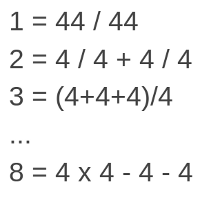 In one famous puzzle, you must make as many numbers as you can using only the given four digits and the basic arithmetic operations. I've worked out which sets of four digits make this puzzle the most interesting, and provided worksheets on this page. Good for grades four and up.
In one famous puzzle, you must make as many numbers as you can using only the given four digits and the basic arithmetic operations. I've worked out which sets of four digits make this puzzle the most interesting, and provided worksheets on this page. Good for grades four and up.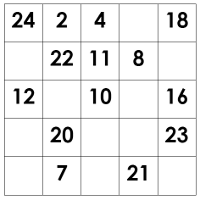 Try the Magic Square Puzzle Worksheets on this site. Almost 40 magic square puzzles to try, as well as ideas for how to use it in a classroom. Good for grade 3 and up.
Try the Magic Square Puzzle Worksheets on this site. Almost 40 magic square puzzles to try, as well as ideas for how to use it in a classroom. Good for grade 3 and up.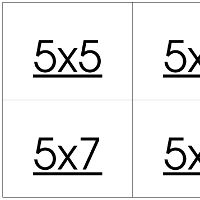 If your kids like more action, and they are at the same level with their times tables, try Times Tables Snap!
If your kids like more action, and they are at the same level with their times tables, try Times Tables Snap!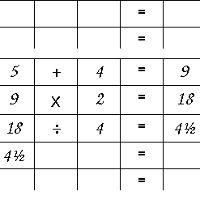 The Arithmetic Math Game is a game where players roll special dice and do arithmetic based on the results, hoping to reach a specific number goal. It is most suitable for grades four or five, but you can modify the rules to make it easier or harder.
The Arithmetic Math Game is a game where players roll special dice and do arithmetic based on the results, hoping to reach a specific number goal. It is most suitable for grades four or five, but you can modify the rules to make it easier or harder.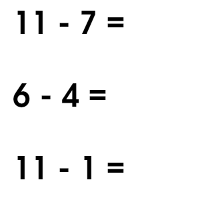 One of these addition and subtraction worksheets is especially designed as a learning tool, not just a revision exercise. The sums are ordered so that the child working through them will discover for themselves the relationship between addition and subtraction, and other important points. There are some plain vanilla revision worksheets too!
One of these addition and subtraction worksheets is especially designed as a learning tool, not just a revision exercise. The sums are ordered so that the child working through them will discover for themselves the relationship between addition and subtraction, and other important points. There are some plain vanilla revision worksheets too!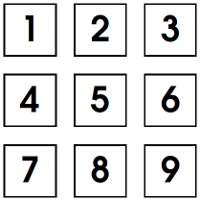 The 1 to 9 game is a game where players have to collect three numbers that add up to 15. It will help teach arithmetic to younger kids. For older kids, it will help them with strategic and logical thinking. The game's page shows how to vary the rules to make it suitable for any elementary school grade.
The 1 to 9 game is a game where players have to collect three numbers that add up to 15. It will help teach arithmetic to younger kids. For older kids, it will help them with strategic and logical thinking. The game's page shows how to vary the rules to make it suitable for any elementary school grade.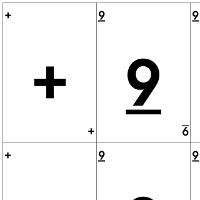 Traveling with kids aged 10 to 99? Take along this Math Card Game and keep them up to speed on their arithmetic! Good for grade 4 and up.
Traveling with kids aged 10 to 99? Take along this Math Card Game and keep them up to speed on their arithmetic! Good for grade 4 and up. This Math Board Game will ensure kids get a lot of mental arithmetic practice! Good for grade 4 and up. This site also has a Times Table Board Game... see below!
This Math Board Game will ensure kids get a lot of mental arithmetic practice! Good for grade 4 and up. This site also has a Times Table Board Game... see below! This Set Of Tiles can be used to help teach kids how to add and subtract numbers of more than one digit. Good for, say, first to third graders, or anyone who just doesn't 'get' the idea of carrying and borrowing 1's.
This Set Of Tiles can be used to help teach kids how to add and subtract numbers of more than one digit. Good for, say, first to third graders, or anyone who just doesn't 'get' the idea of carrying and borrowing 1's.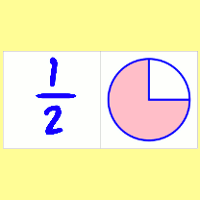 Print out and make this set of Fractions Dominoes. It's a fractions activity designed to help kids recognise how much of a circle each fraction represents. Unlike some other math games, winning is not just about being better at math - but the game nonetheless provides great learning opportunities.
Print out and make this set of Fractions Dominoes. It's a fractions activity designed to help kids recognise how much of a circle each fraction represents. Unlike some other math games, winning is not just about being better at math - but the game nonetheless provides great learning opportunities.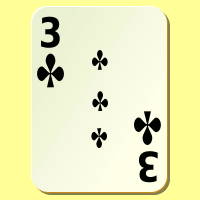 Mathino is a game that can be played with an ordinary pack of cards. It's based on a common card game, Cassino, that already is good for kids learning arithmetic. Good for grades 1 to 3, maybe even 4!
Mathino is a game that can be played with an ordinary pack of cards. It's based on a common card game, Cassino, that already is good for kids learning arithmetic. Good for grades 1 to 3, maybe even 4!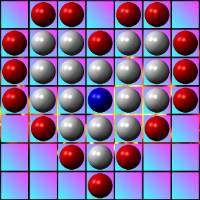 In the brain game Primary Colors players are presented with a grid of colored beads. By jumping bead over bead, every bead must be changed to red, green or blue. There are 24 built-in puzzles to try, or you can ask the computer to generate random puzzles, or even design your own puzzles and link to them from facebook, twitter or your blog.
In the brain game Primary Colors players are presented with a grid of colored beads. By jumping bead over bead, every bead must be changed to red, green or blue. There are 24 built-in puzzles to try, or you can ask the computer to generate random puzzles, or even design your own puzzles and link to them from facebook, twitter or your blog.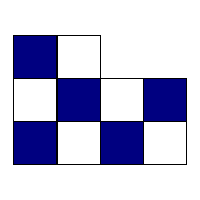 This Checkerboard (or Chessboard) Jigsaw Puzzle will be a great challenge for your primary school kids. Watch them try and try to arrange the pieces until they succeed!
This Checkerboard (or Chessboard) Jigsaw Puzzle will be a great challenge for your primary school kids. Watch them try and try to arrange the pieces until they succeed!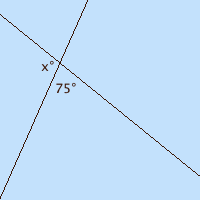 This Angle Geometry Quiz tests your knowledge of a few facts relating to angles. Race against the clock as you prove your skills! Topics covered include the interior angles of triangles and quadrilaterals, angles near parallel lines, lines meeting at a point and others.
This Angle Geometry Quiz tests your knowledge of a few facts relating to angles. Race against the clock as you prove your skills! Topics covered include the interior angles of triangles and quadrilaterals, angles near parallel lines, lines meeting at a point and others.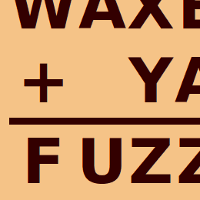 In a Cryptarithm puzzle, each digit of an arithmetic sum has been replaced with a letter of the alphabet. The aim of the puzzle is to restore the original sum. These puzzles are sometimes called alphametics or crypt-arithmetics. You can get many more such puzzles from the resources available at www.cryptarithmania.com.
In a Cryptarithm puzzle, each digit of an arithmetic sum has been replaced with a letter of the alphabet. The aim of the puzzle is to restore the original sum. These puzzles are sometimes called alphametics or crypt-arithmetics. You can get many more such puzzles from the resources available at www.cryptarithmania.com.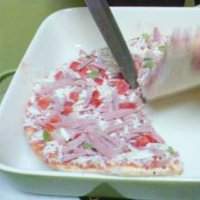 Try your 2nd graders to 7th graders on the Pizza Cutting Puzzle! This puzzle can be made as easy or as hard as you like, so you can tune it for any age group.
Try your 2nd graders to 7th graders on the Pizza Cutting Puzzle! This puzzle can be made as easy or as hard as you like, so you can tune it for any age group.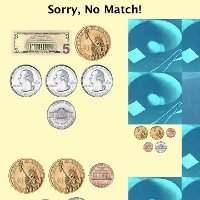 This money counting memory game allows kids from the United States, UK, Australia, New Zealand, Canada the EU and Singapore to practice counting money in a familiar game
This money counting memory game allows kids from the United States, UK, Australia, New Zealand, Canada the EU and Singapore to practice counting money in a familiar game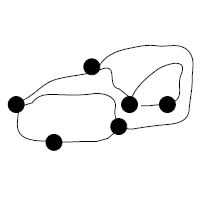 The Dot Joining Game is not a join-the-dots puzzle, but a two-player paper-and-pencil game. I've described the game, and also described how you can help your fourth, fifth and sixth graders to unlock the hidden mathematical patterns behind the game.
The Dot Joining Game is not a join-the-dots puzzle, but a two-player paper-and-pencil game. I've described the game, and also described how you can help your fourth, fifth and sixth graders to unlock the hidden mathematical patterns behind the game. To complement the online version, I've prepared a Printable Version of Color Switcher. Color Switcher is a puzzle game - you start with some beads on a board, and the goal is to change the colors of all the beads using a series of jumps. This web page has ideas for how you can prepare your own color switcher puzzle set, and has links to printable puzzle booklets with dozens of puzzles to try to solve.
To complement the online version, I've prepared a Printable Version of Color Switcher. Color Switcher is a puzzle game - you start with some beads on a board, and the goal is to change the colors of all the beads using a series of jumps. This web page has ideas for how you can prepare your own color switcher puzzle set, and has links to printable puzzle booklets with dozens of puzzles to try to solve.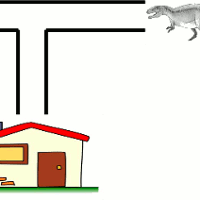 Dinosaur Dodger is inspired by a paradox in probability, called the Absent Minded Driver Paradox. You need to advise some lost explorers whether to go straight or turn off the track. You choose how likely each choice is, and see if your choice helps get more explorers safely home. Helps develop kids' intuition for probability, and (if they look up the strategies and tips blog post) fraction arithmetic too.
Dinosaur Dodger is inspired by a paradox in probability, called the Absent Minded Driver Paradox. You need to advise some lost explorers whether to go straight or turn off the track. You choose how likely each choice is, and see if your choice helps get more explorers safely home. Helps develop kids' intuition for probability, and (if they look up the strategies and tips blog post) fraction arithmetic too. In this puzzle, the goal is to cut a Heart-Shaped Biscuit into three pieces, so that each piece contains only one color of sprinkles. The cuts will be very twisty and wiggly, but that's fine for this puzzle. Because of the shape of the biscuit, this puzzle is perfect for around Valentine's Day, but it can also be used at any other time of the year.
In this puzzle, the goal is to cut a Heart-Shaped Biscuit into three pieces, so that each piece contains only one color of sprinkles. The cuts will be very twisty and wiggly, but that's fine for this puzzle. Because of the shape of the biscuit, this puzzle is perfect for around Valentine's Day, but it can also be used at any other time of the year.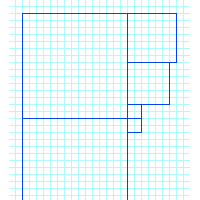 In the Math Architect Online Game the goal is to design an apartment with the given area. The catch? Each room is a square, and you must have as few rooms as possible! This makes the game challenging enough to keep kids occupied, and deep enough to keep them learning as they play. There is also a high scores table showing the best players each month, year and for all time, and some ideas for playing math architect as a paper and pencil game.
In the Math Architect Online Game the goal is to design an apartment with the given area. The catch? Each room is a square, and you must have as few rooms as possible! This makes the game challenging enough to keep kids occupied, and deep enough to keep them learning as they play. There is also a high scores table showing the best players each month, year and for all time, and some ideas for playing math architect as a paper and pencil game.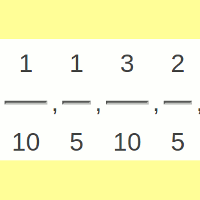 This Fraction Simplifying Puzzle challenges kids to simplify a collection of fractions and observe which ones can and can not be simplified. There are variants of the puzzle that make it suitable for kids just learning fractions, all the way up to lower high school.
This Fraction Simplifying Puzzle challenges kids to simplify a collection of fractions and observe which ones can and can not be simplified. There are variants of the puzzle that make it suitable for kids just learning fractions, all the way up to lower high school.